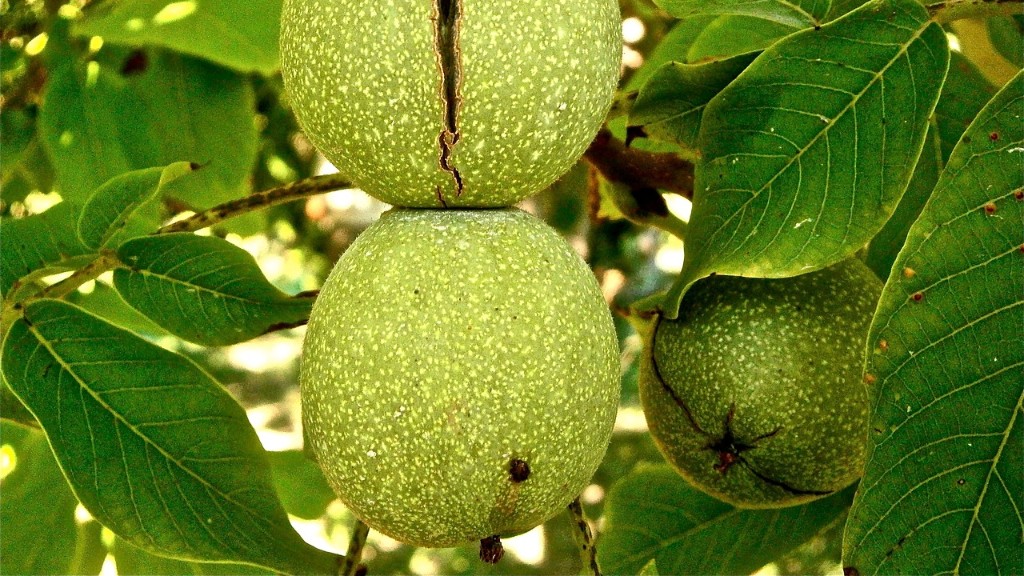Grafting a Meyer lemon tree is a therapeutic and rewarding experience. By successfully grafting this citrus tree, a gardener can enjoy its fragrant flowers and tasty fruit for many years. Grafting Meyer lemons requires some knowledge, supplies, and steady hands. Here are the steps to successfully graft a Meyer lemon tree:
1. Start with a healthy seedling. Prepare a spot for planting with positive drainage and ample sunlight. Dig a hole five times as wide, but only 1/2 as deep. Place the root ball in the center and fill soil in gradually, packing it firmly to secure the tree. In addition, place a 3-4 foot stake to tie the main stem.
2. Determine the variety of the rootstock and scion. Learning the types of lemon trees available and the benefits and features of each will help you determine, which to use as the rootstock and which to give as the scion. Rootstock is the type of tree you are planting, a Meyer lemon in this case. Scion is the citrus variety fruits you want to grow and harvest, such as ‘Meyer lemon Cortese’ or ‘Lemon Lisbon’.
3. Acquire grafting supplies. Get a clean, sterilized grafting knife and budding rubbers, the latter of which can be substituted with electrical tape if necessary. Make sure these items are for one-time use only, as bacteria and viruses can be carried on the knife’s surface.
4. Choose the right grafting method. ‘Side grafting’ is a popular option when you choose a different variety over the rootstock. Making the single cut and tying the scion with the sharp edge down is essential.
5. Carefully remove the bark at the base of the stem and make the cut. Make sure the cut has a slant in one direction and that it is as smooth and precise as possible without hurting the scion.
6. Tie the scion around the rootstock using budding rubbers or electrical tape to secure the scion. Make sure the cut edges point in the same direction for easy attachment, with the base wider than the top.
7. Cover the graft with grafting sealant or wax. This seals the graft from drying out and helps keep fungi and bacteria from entering the tree.
Caring for the Meyer Lemon Tree
Once the plant has healed and the scion has taken root, the next step is to carefully care for the new tree. First and foremost, watering the tree during the warm season is essential. When watering, be sure to give enough water to saturate the soil deeply. Secondly, do not allow fertilizer to touch the plant. If the tree needs fertilizer, use one made especially for citrus or some type of balanced fertilizer.
Thirdly, the tree may require a stake until the rootstock and scion have sealed. Fourthly, with time, you will need to prune off weaker branches, and make sure the Meyer lemon tree has enough direct sunlight, as lack of it will inhibit proper development of the plant.
Finally, it may take up to a year for the tree to produce fruit. To ensure successful flowering and fruiting, be sure to choose the right rootstock, and use a variety compatible with either the rootstock or the area.
Choosing the Right Variety for Your Meyer Lemon Tree
Choosing the right variety for a Meyer lemon tree depends on the climate and preference of the gardener. Some varieties, such as ‘Bearss Lime’ and ‘Eureka Lemon’, survive cold climates better than ‘Variegated Pink Lemons’, which is well-known for its aesthetic appeal due to its vibrant greenish-pink striped skin.
Whichever variety a gardener chooses, they should do so with the knowledge that a newly grafted Meyer lemon tree cannot yield fruit until the scion is well-established in the rootstock. This may take up to a year, depending on the variety and other conditions.
In order for a Meyer lemon tree to produce successfully and bear delicious fruit, location and variety are key factors to consider. Starting with a hardy rootstock, such as ‘Lemon Eureka’ and scion, such as ‘Meyer lemon Cortese’ is an ideal choice for cold climates. For warmer climates, ‘Variegated Pink Lemons’ is a common choice due to its beautiful, mottled-pink skin and sweet flavor.
Lastly, be sure to have patience. As with all fruit trees, the production is only as good as the care it receives. A newly grafted Meyer lemon tree may take up to two years to bear fruit, so cherish and nurture your tree until then.
Benefits of Grafting a Meyer Lemon Tree
Grafting a Meyer lemon tree comes with many benefits, the most sought-after being the ability to harvest delicious, sweet fruits. Meyer lemons are famously known for their fragrant, tart-sweet flavor, which makes them ideal for use in cocktails, marmalades, or baked goods.
Other benefits include increased resistance to pests and diseases, as well as increased plant vigor. Grafting a Meyer lemon tree also gives the gardener the ability to control and predict the size of the tree. By grafting a Meyer lemon onto a dwarf rootstock, one can prevent the tree from becoming too large, therefore making it easier to maintain.
Grafting also reduces the amount of time it takes for the tree to bear fruition, so the gardener can expect to harvest fruit sooner. Finally, Meyer lemons are ideal for containers on patios, decks, or balconies. Therefore, a grafted Meyer Lemon tree is a great choice for city dwellers or gardeners with limited space.
Advantages of Meyer Lemons
Meyer lemons have many advantages over other types of citrus fruits. Not only are they sweet and fragrant, but also versatile. Meyer lemons have a momentous amount of uses, both culinary and medicinal. In addition, Meyer lemons are more easily available than other types of lemons, making them a great choice for home gardeners.
Another advantage of Meyer lemons is their ability to tolerate cold climates better than other citrus trees. This means gardens in the north can happily grow the fruit even in winter months. Furthermore, the trees are low-maintenance and provide a beautiful, fragrant display in the garden.
Finally, Meyer lemons provide an array of health benefits, such as reduced inflammation, improved heart health, heightened immunity, and liver support. Furthermore, the fruit provides a good source of Vitamin C and calcium, both of which are essential for overall health.
The Bottom Line
Grafting a Meyer lemon tree is a great way to enjoy sweet, fragrant fruit on a year-round basis. More importantly, the gardener has control over what type of lemon tree to buy, as well as the size and level of maintenance of their tree. Furthermore, Meyer lemons have many advantages over other citrus fruit, including increased resistance to disease and improved health benefits.
Grafting a Meyer lemon tree requires some knowledge, supplies, and steady hands. It also requires care and time for the scion to become established and for the tree to produce fruit. With the right variety, soil, and care, the gardener can enjoy fragrant flowers and a bountiful harvest of Meyer lemons for many years to come.






Apparently meyers lemon trees are susceptible to freezing cold weather for a couple of days. I had ours covered up and it still froze during the brief freeze of a few hours.